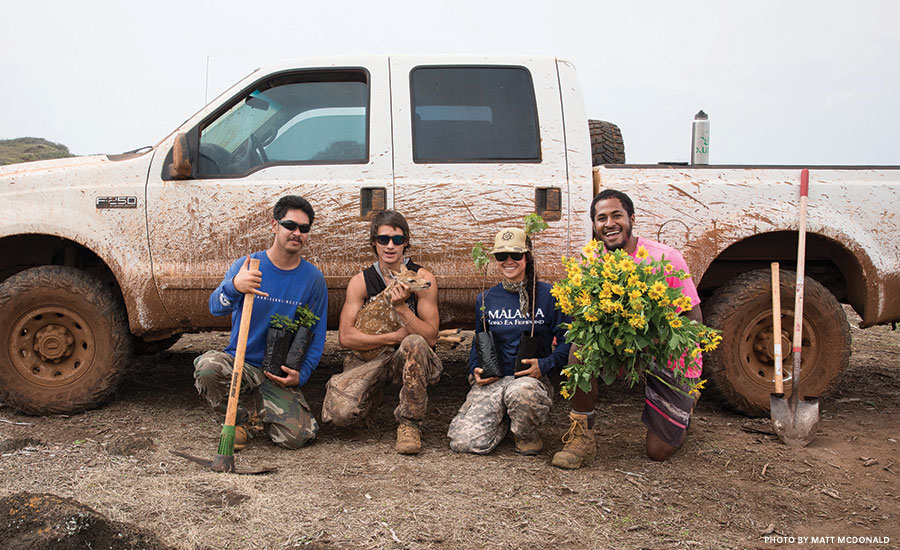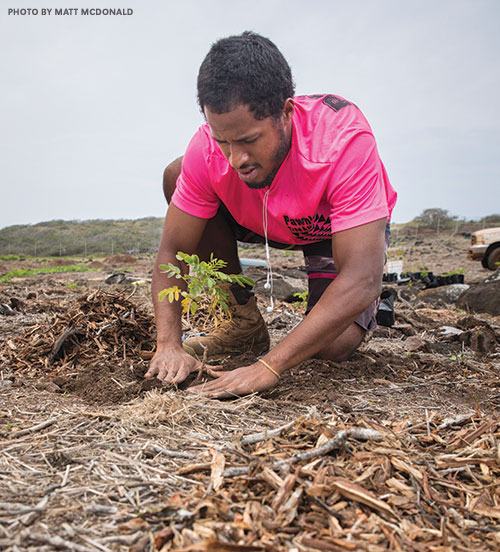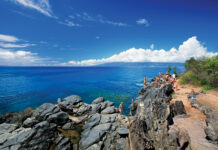
When we arrive at the dunes at Anapuka, a staff member is holding a fawn that had wriggled its way through the fence. It’s telling that they caught the deer by hand, considering that’s how they do everything here—from planting to watering and weeding.
Haase says the progress is “completely dependent upon community involvement.” In the eight years that Molokai Land Trust has been actively working at Mokio, staff and volunteers have cleared and restored just sixty acres—3 percent of the land. While that might not seem like much, what the crew has accomplished on those sixty acres has proved there is no impossible.
“People called this a wasteland. They said it was impossible to restore. But we’ve completely changed the plant community and turned this into a thriving ecosystem. We have this whole new web of life.”

That web includes more than just native plants. Endangered pollinators like yellow-faced bees suckle from native flowers. Flocks of noio (black noddies) fly circles over the water; and ‘u‘au kani (wedge-tailed shearwaters), koa‘e kea and koa‘e ula (frigate birds) are once again nesting onshore. Staff have sighted rare birds like the bristle-thighed curlew within the preserve, and Laysan albatrosses are once again visiting the cliffs, attracted by decoys that squawk out songs from a solar-powered vocalization unit. Partnering with Cornell Ornithology Lab and the American Bird Conservancy, the Molokai Land Trust deployed the decoys in November 2017, and an albatross landed ten days later—a record response time in Hawai‘i.
When the crew sets out to restore a new plot, they begin by clearing the land of kiawe and pulling weeds before digging holes for new plants. On a good day, a crew of three can put 400 native plants in the ground before loading up the truck and driving home.
And you want to know the ironic part? One reason Mokio is thriving is that awful kiawe.





